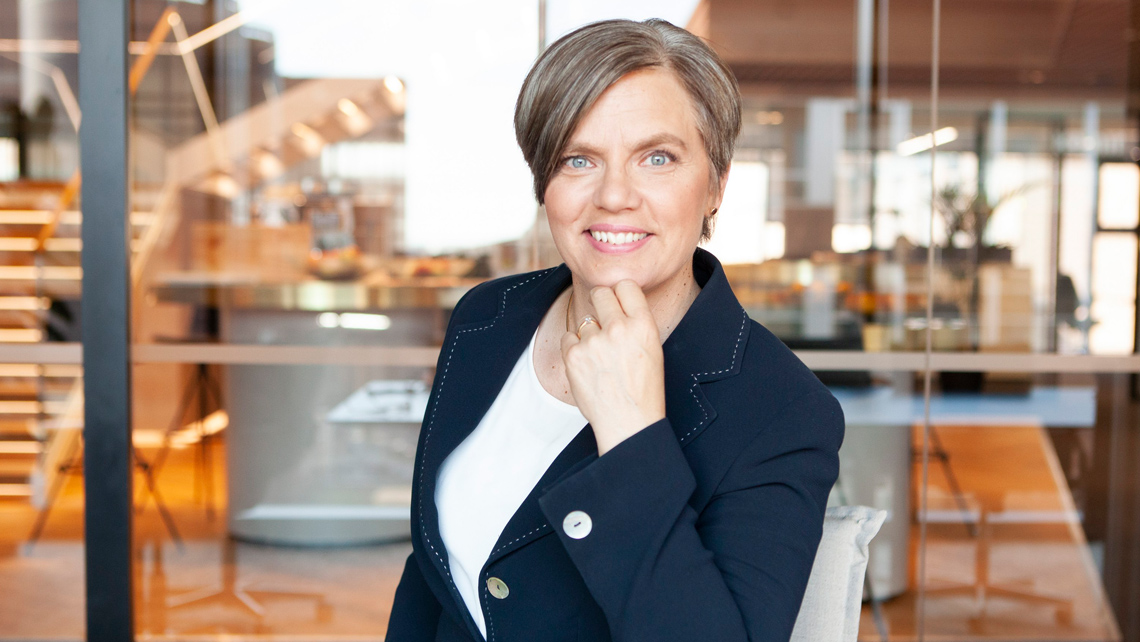Polluting the planet with plastic
Microplastics are tiny plastic particles less than five millimeters in size, with a range of different shapes and chemical compositions. “Primary microplastics are intentionally produced small plastic particles like microbeads in cosmetics, exfoliating creams, or toothpaste,” explains Outi. “Other sources of primary microplastics are pellets that are produced as a raw material for the plastics industry, as well as 3D printing powders.”
“These primary microplastics escape into nature for example through our wastewater,” Outi continues. “Secondary microplastics are created from the breakdown of larger plastic products. Car tires are one main source, as is the asphalt on the road surface. When we drive, the abrasion of the tires against the road causes tiny plastic particles to wear off both surfaces – particles which eventually make their way into the water table. Another common source of secondary microplastics is plastic fibers that shed from fleece or other synthetic clothes in washing machines. And sadly there is also a huge amount of plastic waste in our oceans and natural spaces that is all continuously shedding microplastic. It’s a huge problem.”
Finding a solution with chemicals
Chemical coagulants have been used for decades to remove small organic and inorganic particles from wastewater, so scientists at Kemira had the idea to apply their expertise to the problem of microplastics. “All raw water contains tiny particles,” points out Outi. “There are natural processes that remove them, like sedimentation in which gravity causes particles to settle. But the smaller the particles the longer they take to settle naturally. To turn raw water into drinking water we give nature a helping hand with coagulants that speed up the sedimentation of particles.”
“Microplastics are also small particles that are present in water,” continues Outi. “Some are light and float and others are heavier and sink, but our idea was that if we are removing organic particles we might be able to remove microplastic particles in a similar way. To test this theory we turned to Aalto University here in Finland and initiated a joint study on the role of chemicals in removing microplastics from the wastewater process.”
Chemical expertise and academic excellence
“There have been previous studies on microplastic removal and some looked at wastewater treatment processes, but they didn’t look at the role of chemicals,” Outi explains. “They showed that 98% of microplastics are removed in the process, but only looked at large microplastics – those above 10 micrometers – so nobody knows how many smaller particles there are in wastewater. We want to make sure that we are developing solutions that remove even the small particles, so we felt it was important we included these in our study.”
“Our findings showed that chemicals do indeed enhance the removal of microplastics – and they are efficient for even small particles,” continues Outi. “Based on this we feel convinced that the right chemicals -really can enhance the removal of microplastics from wastewater. Now we have looked at different chemicals under various simulated conditions on wastewater in the lab, we want to see if we can replicate our findings in a real wastewater treatment process. Our eventual goal is to guarantee a wastewater treatment process that removes microplastics before they are released into the environment.”
Our findings showed that chemicals do indeed enhance the removal of microplastics – and they are efficient for even small particles.
Work with purpose
“I find it really exciting to be part of the research world where we’re developing solutions for the environment and for cleaner, safer water,” explains Outi. “Pushing the boundaries of what we can do is really motivating – keeping drinking water safe with sustainable solutions will benefit the environment and every member of society. By making better choices as consumers, we can all help to reduce the amount of microplastics that end up in wastewater, but together with my research team I am determined to discover how chemicals can reduce microplastic pollution even further.”


